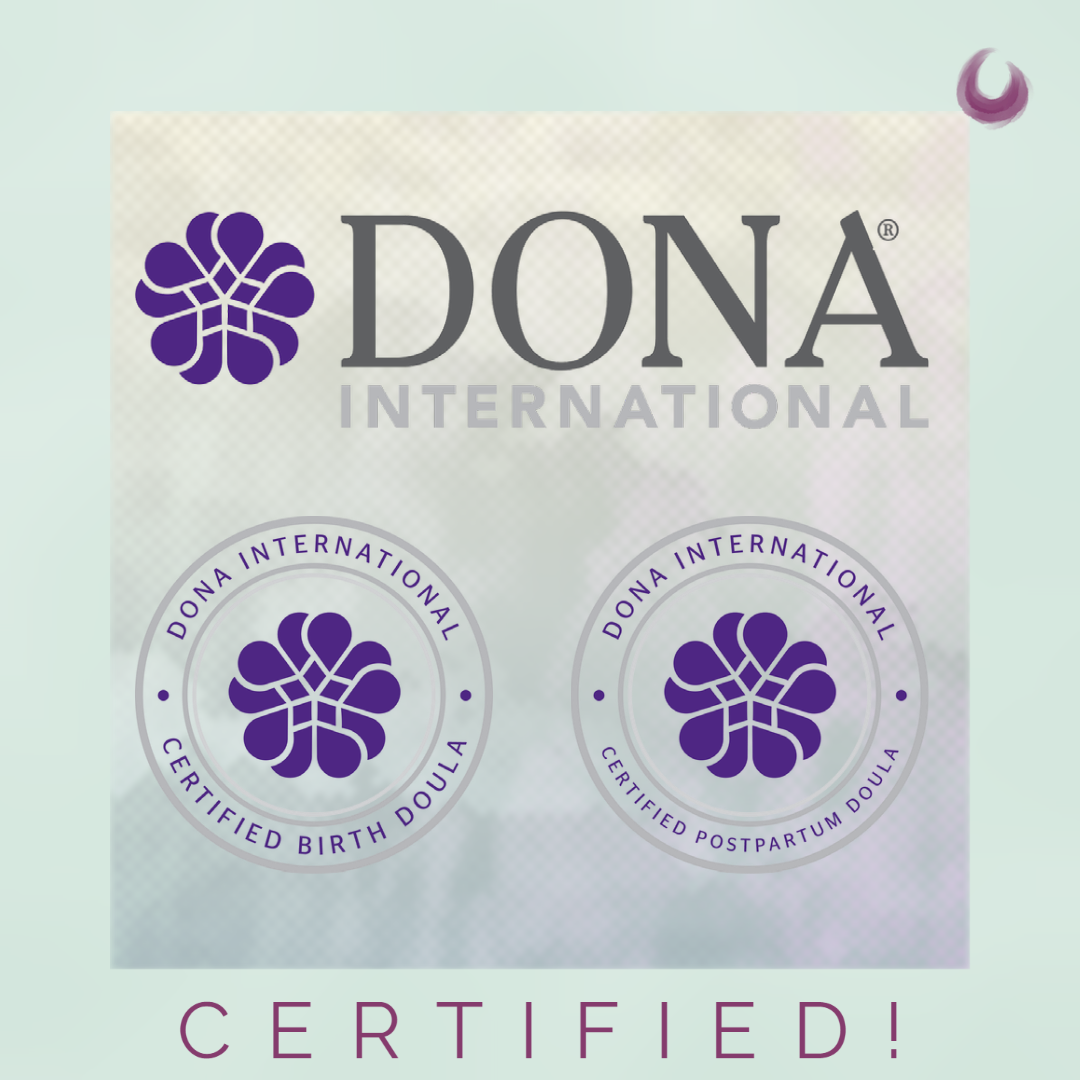In previous posts I have mentioned the FIVE aspects of doula support : Information, Interpersonal, Physical, Emotional, and Spiritual Support.
We’ve touched on the value of information in knowing your options prior to the start of labor. As well as how a doula’s superpower of Mediation & Time (your interpersonal support) tend to provide you better outcomes and overall experience during your birth.
The final three tend to flow with each other in a moment-to-moment type of support with each contraction and breath. Rarely do you have one without the others close by.
To give them some individual attention for clarity:
Physical Support can be anything from those Hip Squeezes I’ve mentioned to simply hugs, rubbing your back, or stroking your hair. Even just the physical presence of a support person throughout the entire birth process has been shown to alleviate birthing parent stress, fear, and pain. Often giving them a sense of confidence that extends to their partner!
Emotional Support can be affirmations and words of encouragement, holding space for your feelings (the good, bad, dramatic or subtle: your feelings and experiences are VALID). Physical support can easily share space with emotional support like a kiss to the forehead or stroking your hair. Something that can be deeply comforting for some birthing parents. Which leads me into the final aspect of support.
Spiritual Support can seem esoteric and misconstrued for our secular friends. This does not mean your doula and you have to share the same faith, if any. This is “simply” at it’s core the connection between people experiencing something together. Being present, open, and willing to be seen. Whether it is woman to woman or if both of you have had children before and any other combination in between:
We are all human and we are sharing this birth space together right now. We are in this together.
In order for a doula to tap into these three aspects of support; to truly be present and grounded during a birth she needs a great deal of TRUST.
Trust in the birth process. This allows a doula’s experience and knowledge to shine through.
Familiar with the various degrees of “normal” and confidence in you, your body and your baby’s ability to birth allows them to be a grounded and calm presence during a birth.
A parent’s touch stone for reassurance and guidance as needed. (That’s for both the birthing person and their partner!)
This confidence in the birth process allows a freedom to move into the space of hands-on physical support and to hold space emotionally.
Let’s face it, when you’re feeling uncertain, anxious, or afraid; it is really hard to problem solve or sit within the present moment. Everything feels BIG and A LOT.
For a doula, she can settle into that space of calm clarity because she trusts the process.
Your doula believes in you, your baby, and your body’s ability to birth.
Hiccups may happen along the way, and they are prepared for those too. Able to adjust course to provide the support you need for when you need it.
That trust alleviates the fears and anxieties; allowing a clearer mind to help find what works best for you during a particular phase of labor.
So what does that look like during birth?
Perhaps bouncing on the ball no longer brings the relief it did before. When something has been helping for so long, these changes can be a trigger for anxiety and uncertainty.
Your doula knows it is absolutely normal for coping techniques during one phase of labor to not necessarily bring relief later on. And vice versa. Chatting to distract from the contraction surges may have helped during your early labor, but now as things get more intense you can’t stand the chit chat. And that’s okay!
A doula is tuned into the birthing person and their partner. They can read the room as well as feel out when something is no longer working. When you trust the process, it is easier to let go and try other options. Like leaning over the birth ball and seeing if it provides more relief instead of bouncing.
Little adjustments can make a huge difference.
In the midst of labor and feelings of uncertainty, it can be difficult to realize a small change could help. Even trying to recall positions and coping techniques in the moment can be challenging during a birth.
The doula is well-versed in these little adjustments and has an extensive tool kit of things to try!
One of the advantages of having a doula meet prenatally with you goes beyond the sharing of information and education, but also preparation of this tool kit. Finding what tends to work best for you when you are coping with stress or pain.
Not everyone is touchy feely or feels reassured with words of affirmation. Exploring those preferences prior to labor helps develop this took kit specifically for you and your birth. Reducing how often a birthing person needs to be drawn away from “laborland” or their more primal brain that they need for birthing tends to make the birthing process easier.
That’s why it’s so important to discuss options and practice coping techniques prenatally.
Birth deserves the time and attention to prepare yourself and your partner beforehand so you both can sink into the moment-to-moment experience.
Having your doula there adds to that reassurance and relief that allows you to be present in the moment. Let your doula do the problem solving of suggesting different things to try. We trust in you and the process, and trying different methods and techniques is a part of that process.
Future blogs and podcasts will go more into detail of the specific coping techniques. To give them their time to shine. In the meantime, you are always more than welcome to reach out to see how a doula could benefit you and your birth and postpartum experience.
Before that, our next installment of the What is a Doula Series is the Wrap Up! A lovely summary in one spot of the various topics of the series and clearing up an additional questions that may have come up along the way!
Until then, Happy Birthing!
JB


















































